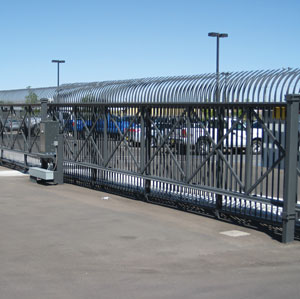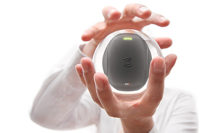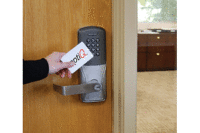
|
|
Today’s technologies take gates from tough to multi-faceted. For example, gates can have special features that allow them to close extremely quickly in an emergency lockdown or even open partially for smaller vehicles, limiting exposure. PHOTO COURTESY OF DOORKING |
The utility environment is challenging in many ways. Brent Franklin, president, Unlimited Technology Inc., Chester Springs, Pa., sums it up appropriately when he says, “Utilities are often located in the middle of some of the worst environments and applications you can possibly imagine. They are in the middle of a transformer field or on the side of a rocky hill. They absolutely have a lot more inherent risk than a normal office building.”
Utilities may be one of the most critical — and unique — vertical markets integrators face when designing access control systems. But what makes them different? Their physical layout, for one. Utilities of all types, including gas, sewer, water, electric telephone and nuclear are generally spread over a large geographical area, and encompass a variety of types of facilities, from office complexes to distribution centers, to generating plants, to small, unmanned remote sites.
“Utilities have a lot of outbuildings,” says Dave Adams, senior product marketing manager, HID Global, Irvine, Calif. “These disconnected buildings are very important to the infrastructure, and you have to design a system that operates well in a disconnected environment, while making sure that the person going into this building is who they say they are. In the past it has been a challenge.”
And while a corporation is generally worried about theft and employee safety, utilities have even more to be concerned about.
“Utilities are highly desirable targets for terrorists,” says David Price, marketing manager, Camden Door Controls Inc., Toronto. “They also have to prevent innocent people from gaining access, whether it is teenagers on a dare or other people wandering onto the property and potentially getting hurt. Stolen copper is also extremely valuable now, and utilities are losing millions in copper theft.”
Utilities also answer, ultimately, to their customers. The last thing they want is an interruption of service due to lack of security or intentional outside attack.
Access Trends
Because of the special nature of utilities’ risks, the access control solutions typically employed at these locations have tended to be physically tough, whether that included fences and gates, or heavy-duty padlocks monitored by video cameras. But like the rest of the industry, utilities in recent years have looked to take advantage of advancing technology trends.
Brad Aikin, product manager for commercial electronic locks, Ingersoll Rand, Carmel, Ind., has seen utilities look more to integrated online access control locks. “They want the ability to monitor real-time if someone is gaining access to an area,” he says.
“What they like to be able to do is manage access centrally from their headquarters,” adds Dennis Geiszler, vice president of marketing, Keri Systems, San Jose, Calif. “Often they have just one or two readers at hundreds of remote sites. They don’t have easy communication out to them. In the past they have used modems, but now they are starting to have TCP/IP connections out there, allowing them to manage remotely what is going on at that site.”
Wireless is proving to be a boon for these types of sites. “We do deploy a lot of wireless mesh,” says Ken Friedline, regional operations manager, Intelligent Access Systems, Raleigh, N.C. “It falls hand in hand with access and video — anything that can provide an IP address to a wireless system and bring it back into the head end equipment. The last thing they want to do is dig up ground for wiring.”
Utilities have also recognized that they are part of an enterprise and are starting to take advantage of those types of systems as well, not only looking to standardize their access control across their enterprise, but to function as a part of the total enterprise needs.
“They are seeing the value of tying access control into other parts of their system, whether that be production, equipment or fire and safety,” Aikin says. “They are realizing that they are not independent, but a critical part of managing their environment.”
They are also seeing the value in protecting more than just their physical perimeter. “Utilities are extremely sensitive to cyber security needs,” says Rick Current, senior sales engineer, Matrix Systems Inc., Miamisburg, Ohio. “It is a growing concern for all utilities. They don’t want to be vulnerable to that kind of attack.”
Even in the physical security arena of gates and fences, utilities are looking at technology advances to heighten their security.
“We are building speed controllers in these devices that allow for emergency closing at six feet per second,” says Richard Sedivy, director of marketing and regulatory affairs, Door-King, Inglewood, Calif. “They are also interested in our partial open feature, which can open a 20-foot gate just the 10-12 feet necessary for a smaller vehicle, limiting exposure to a big opening for no reason.”
Looking to the Future
Biometrics are currently used in some utilities, particularly in the nuclear industry for the highest levels of security. But this interest is likely to widen as new biometrics come on the market and allow for more efficient reads in a rugged environment.
Smart phones are another technology likely to revolutionize utility access control, Adams adds. “We have been working on using near field communication (NFC) to actually make the phone the reader. Instead of having a control panel inside the protected area make the decision to unlock the door, you can have a phone that actually has the rules engine in it — a virtual access control panel.”





